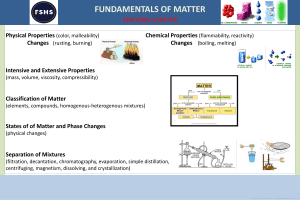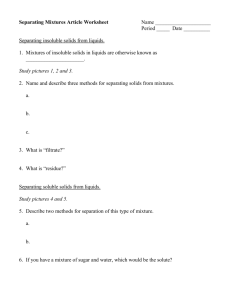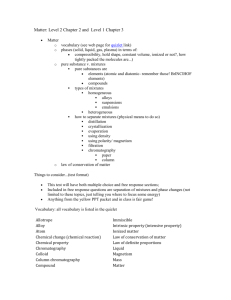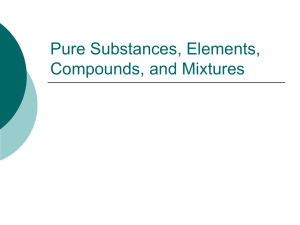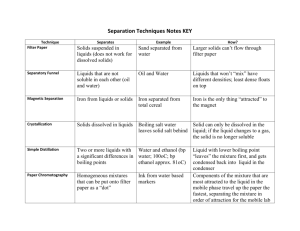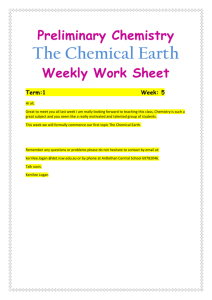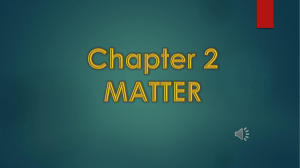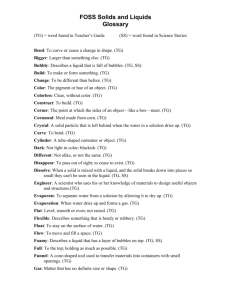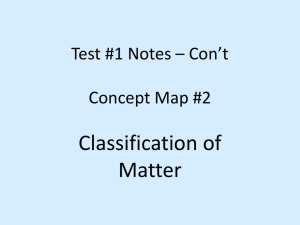Separation Techniques
advertisement
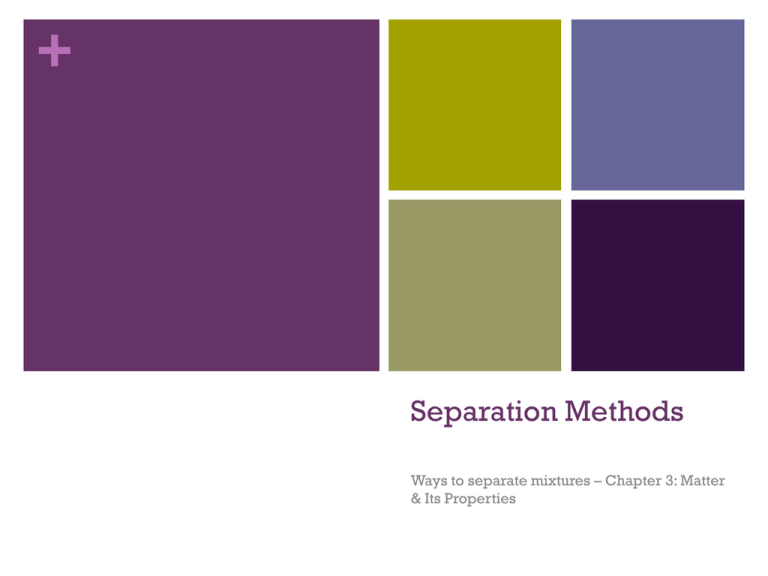
+ Separation Methods Ways to separate mixtures – Chapter 3: Matter & Its Properties + How do we separate …? 2 + Separating Mixtures Substances in a mixture are physically combined, so processes bases on differences in physical properties are used to separate component Numerous techniques have been developed to separate mixtures to study components • Filtration • Chromatography • Centrifuging • Evaporating • Crystallization • Dissolving • Decantation • Sieving • Flotation • Physical Means 4 + Filtration Used to separate heterogeneous mixtures composed of solids and liquids Uses a porous barrier to separate the solid from the liquid Liquid passes through leaving the solid in the filter paper Filtration can be used to separate an insoluble substance from a soluble substance + Distillation Used to separate homogeneous mixtures Based on differences in boiling points of substances involved Evaporation can be used to separate a solute from the solvent in a solution + Crystallization Separation technique that results in the formation of pure solid particles from a solution containing the dissolved substance As one substance evaporates, the dissolved substance comes out of solution and collects as crystals Produces highly pure solids Rocky candy is an example of this + Centrifuging 11 •Centrifuges rotate containers of liquids to separate suspended materials with different densities. •Centrifuges separate different components of human blood or milk and to clarify solutions. A high speed separator can rotate at great speed to separate fat (cream) from milk. •The spin drier in washing machines is a type of centrifuge that throws out the liquid by the "centrifugal force" of the rotation. 12 A magnet Can be used to separate a magnetic substance from a non-magnetic substance + Chromatography Separates components of a mixture based on ability of each component to be drawn across the surface of another material Mixture is usually liquid and is usually drawn across chromatography paper Separation occurs because various components travel at different rates Components with strongest attraction for paper travel the slowest • Chromatography ( colour writing) is used to separate small amounts of chemicals so that they can be analysed. • Different substances or different components move at different speeds through a strip of wet paper a gel or a gas. 15 + Decantation Decanting is done to separate particulates from a liquid by allowing the solids to settle to the bottom of the mixture and pouring off the particle-free part of the liquid. Another method is to allow two immiscible liquids to separate and the lighter liquid is poured off. + Sieving a porous material is used to separate particles of different sizes. method is most commonly used to effect gross separations, as of liquids from suspended crystals or other solids. to accelerate filtration, pressure usually is applied. a series of sieves is stacked, with the screen of largest hole size at the top
